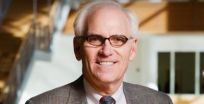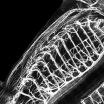(Press-News.org) CHAMPAIGN, Ill. – There's a reason why some sports fans are referred to as "die-hards" – even after they move away, their loyalty to their hometown team endures, according to research by two University of Illinois professors.
Scott Tainsky and Monika Stodolska, professors of recreation, sport and tourism, say new residents of a community maintain an attachment to their old team or former city as a way of asserting their identity after they move.
"People new to a city don't just adopt their new hometown's team as a way to acclimate themselves in a new community," Tainsky said. "For new residents, sports is not that tool to stand around the water cooler and start the assimilation process – at least not right away, and possibly never for some. They see it more as a way to assert their loyalty to their old hometown team, or the city they identify with. That leads us to conclude that the team or city someone identifies with is a relationship that endures."
The study, published in Social Science Quarterly, looks at the stability of fan identification among individuals who relocate, and whether that identification represents an actual bond between fan, team or city. The researchers found that new population inflow, regardless of whether it's domestic transplants moving to a new city or international immigrants moving to the U.S., was not associated with an increase in television ratings for NFL broadcasts in the new city.
"I think we tend to think of groups of fans as static groups," Tainsky said.
"But one thing we know is that the number of times the average U.S. citizen moves in their lifetime is close to 12 times. Most of the time, those moves are within the same metropolitan area, or within the same state. But between 2.2 and 2.7 percent of the population moved from state-to-state annually. So we have to understand not just the people who've lived somewhere for a while, but also the motivations of this large group of new people."
Tainsky and Stodolska also discovered that individuals who previously resided in a market were more likely to tune into a telecast featuring a team representing their former city, but only when the game was being held in their former city of residence.
Tainsky says this accounts for why some sports teams have large fan diasporas spread across the country – why there are, for example, Pittsburgh Steelers and Chicago Cubs fans nationwide. It's also consistent with existing research that teams that have been in the marketplace longer have an extremely loyal fan base.
"Since it takes a long time to establish a bond between fan and team, a team's stability in the marketplace only adds to its popularity," Tainsky said. "So if you're watching a game in your new city, you have no relationship with your new city, and are going be less likely to have any interest in the team."
Unless, Tainsky said, the new team is playing an away game against the old beloved home team, and only then when the game is played in the previous hometown. That's something that a network executive would probably like to take into account, knowing that so many people have left a city, and only broadcasting those games if the contest was held in a certain city.
"Our study shows that the action on the field alone may not be sufficient to get recent migrants to tune in," Tainsky said. "Nostalgia for their old hometown does seem to play a role in people's consumption choices, so those sorts of things do add value to the experience."
For international immigrants, sports may serve as one of the cultural markers linking them to their place of origin. Mexican immigrants in Chicago, for example, would be very keen to watch games of their national team played abroad and when Mexican soccer teams come to the U.S.
"International migrants watch the games broadcast from their home country not only for the experience of watching the game but also because of very strong nostalgic feelings to their home city and country," Stodolska said.
Interest in following the teams of one's home country wanes somewhat among the second-generation immigrants, who are more likely to adopt mainstream American sports teams such as baseball, American football and basketball, Stodolska said.
INFORMATION:
Editor's note: To contact Scott Tainsky, call 217-244-1857; e-mail tainsky@illinois.edu; to contact Monika Stodolska, e-mail stodolsk@illinois.edu.
Research on team loyalty yields new insight into 'die-hard' fandom
2010-09-08
ELSE PRESS RELEASES FROM THIS DATE:
No need to worrry about deflation -- yet, U. of I. economist says
2010-09-08
CHAMPAIGN, Ill. — A University of Illinois economist says consumers and investors concerned about the specter of deflation looming over an already bleak economic landscape should relax – for the time being, at least.
Although the consumer price index is near zero, J. Fred Giertz says we're unlikely to see a prolonged deflationary period like the slump Japan experienced during its "lost decade" of the 1990s.
"We're close to zero right now, but we're not below zero," said Giertz, an Institute of Government and Public Affairs economist who compiles a monthly barometer ...
Brown-led research divines structure for class of proteins
2010-09-08
PROVIDENCE, R.I. [Brown University] — Most proteins are shapely. But about one-third of them lack a definitive form, at least that scientists can readily observe. These intrinsically disordered proteins (IDPs) perform a host of important biological functions, from muscle contraction to other neuronal actions. Yet despite their importance, "We don't know much about them," said Wolfgang Peti, associate professor of medical science and chemistry. "No one really worried about them."
Now, Peti, joined by researchers at the University of Toronto and at Brookhaven National Laboratory ...
New compound safely reduces plaques in mouse model of Alzheimer's disease
2010-09-08
A new study identifies molecules that can be used to selectively reduce generation of the sticky, neuron-damaging plaques that are the hallmark of the Alzheimer's disease (AD) brain. The research, published by Cell Press in the September 9 issue of the journal Neuron, may lead to the development of effective and safe therapeutics for this currently incurable disease.
Previous research has suggested that an alteration in brain levels of amyloid ? proteins (A?) plays a major pathogenic role in AD, a devastating neurodegenerative disorder that causes progressive cognitive ...
Brain mechanism linked to relapse after cocaine withdrawal
2010-09-08
Addictive drugs are known to induce changes in the brain's reward circuits that may underlie drug craving and relapse after long periods of abstinence. Now, new research, published by Cell Press in the September 9 issue of the journal Neuron, uncovers a specific neural mechanism that may be linked to persistent drug-seeking behavior and could help to guide strategies for development of new therapies for cocaine addiction.
Previous research has shown that the ventral tegmental area (VTA) is a brain region that is activated when cocaine users experience a craving for cocaine ...
Single gene regulates motor neurons in spinal cord
2010-09-08
New York (September 8, 2010) – In a surprising and unexpected discovery, scientists at NYU Langone Medical Center have found that a single type of gene acts as a master organizer of motor neurons in the spinal cord. The finding, published in the September 9, 2010 issue of Neuron, could help scientists develop new treatments for diseases such as Lou Gehrig's disease or spinal cord injury.
The "master organizer" is a member of the Hox family of genes, best known for controlling the overall pattern of body development. By orchestrating a cascade of gene expression in ...
Compounds fend off Alzheimer's disease amyloid pathology
2010-09-08
A team of scientists, led by University of California, San Diego School of Medicine researchers, has synthesized hundreds of new compounds with the potential of reducing the production of the A-beta 42 peptide, a primary component of Alzheimer's disease (AD).
In mouse models, one tested compound specifically reduced levels of A-beta 42, which is believed to be responsible for the destruction of neurons, but left other essential enzymatic activities in the brain unaffected, said Steven Wagner, PhD, a project scientist in the UCSD Department of Neurosciences.
The ...
Extreme X-ray source supports new class of black hole
2010-09-08
A group of international astronomers in the UK, France and the USA, led by the University of Leicester, have found proof to confirm the distance and brightness of the most extreme ultra-luminous X-ray source, which may herald a new type of Black Hole.
The X-ray source, HLX-1, is the most extreme member of an extraordinary class of objects – the ultra-luminous X-ray sources – and is located in the galaxy ESO 243-49 at a distance of ~300 million light years from the Earth.
The astronomers' findings confirm that the extreme luminosity (which is a factor of ~100 above ...
MIT researchers find that interneurons are not all created equally
2010-09-08
CAMBRIDGE, Mass. – A type of neuron that, when malfunctioning, has been tied to epilepsy, autism and schizophrenia is much more complex than previously thought, researchers at MIT's Picower Institute for Learning and Memory report in the Sept. 9 issue of Neuron.
The majority of brain cells are called excitatory because they ramp up the action of target cells. In contrast, inhibitory cells called interneurons put the brakes on unbridled activity to maintain order and control. Epileptic seizures, as well as symptoms of autism and schizophrenia, have been tied to dysfunctional ...
Neurogenetic studies show proprietary compound reduces brain plaques linked to Alzheimer's
2010-09-08
SAN DIEGO -- In the Sept 9, 2010 issue of Neuron, Neurogenetic Pharmaceuticals, Inc. (NGP) reports proof of concept studies that show its proprietary compound, NGP 555, is effective in preventing the amyloid pathology of Alzheimer's disease (AD) in a transgenic mouse model. The study further demonstrates that following chronic treatment with the gamma secretase modulator (GSM) compound from NGP, the mice were devoid of gastrointestinal side effects, an adverse finding commonly associated with gamma secretase inhibitors (GSIs).
A major pathological hallmark of Alzheimer's ...
Use of informatics, EMRs enable genetic study of vascular disease
2010-09-08
Scientific research published in the current issue of the Journal of the American Medical Informatics Association (JAMIA) reports on a study of genetic variants that influence human susceptibility to peripheral arterial disease (PAD), made possible by leveraging electronic medical records (EMRs; also called EHRs or electronic health records). A team of authors from the Mayo Clinic Divisions of Cardiovascular Diseases and Biomedical Informatics and Statistics conducted the study and concluded that EMR-based data, used across institutions in a structured way, "offer great ...




